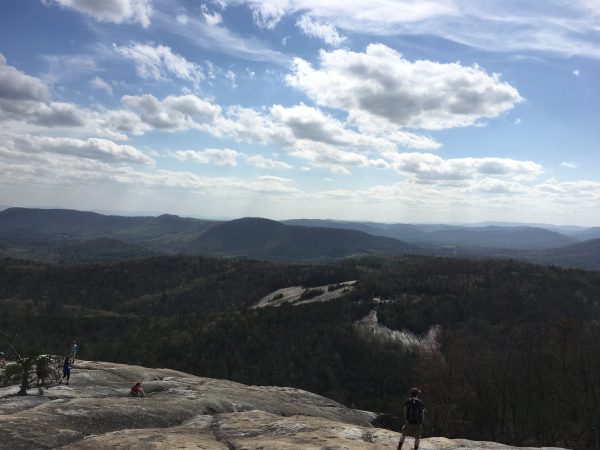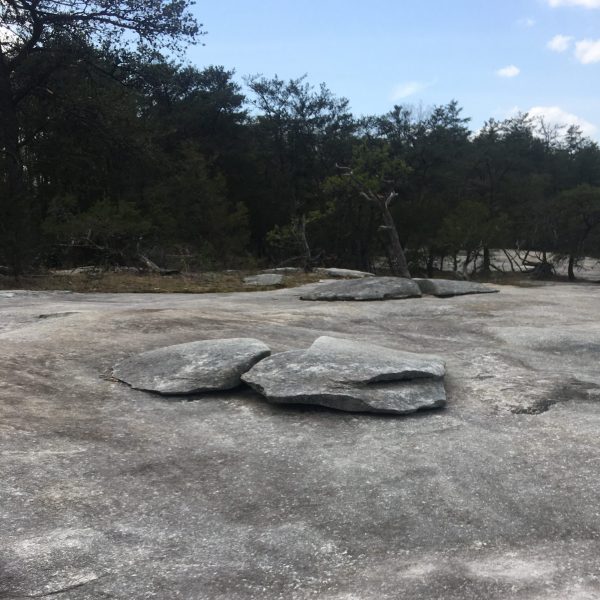Hillslopes dominate the landscape of Stone Mountain State Park. These hillslopes are based on large igneous intrusions, which formed during the Alleghanian orogeny (~335 Ma). The hillslopes are now dominated by diffusive processes. The sections below discuss more on the types of processes that are evident at Stone Mountain State Park specifically.

Hillslope Forming Materials
Stone Mountain houses large, stable, exposed granodiorite domes. The surrounding colluvium is mostly sand and pebbles from the weathered igneous rock as well as clayey soil. This juxtaposition of material promotes an interesting pattern of weathering. Be sure to visit the Weathering page for more information.
Hillslope Shape
Convex hillslope, meaning that the hillslope is being shaped by creep-dominated processes as opposed to mass wasting. There was no apparent evidence of any mass wasting. In theory, rock falls could occur due to the slope angle being less than 36 degrees in many places. However, the strength and cohesion of the massive bedrock makes that unlikely.

Diffusive Processes
Soil Creep is the process of soil moving downslope due to diffusion. Tree throw is a type of soil creep evident in throughout the park which involves the uprooting of trees and subsequent movement of soil by gravity.
Exfoliation is the sudden pressure release along failure planes in exposed outcrops of rock sheets oriented parallel to the land. This process is apparent on the smooth bare rocks exposed at this site. Below is one of many examples of exfoliation we saw in the park.
Ice freeze is the process by which water infiltrates into cracks in rocks, freezes, and breaks the rock apart.



